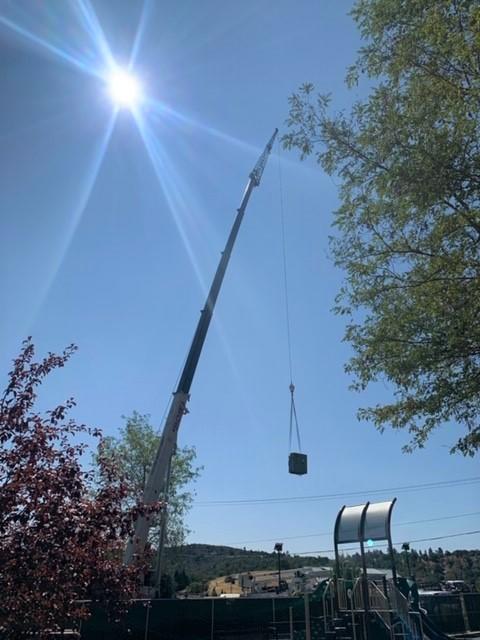In August 2020, SDG&E completed its Julian Underground Expansion Project, an electric resiliency and reliability effort that helps reduce wildfire risk and the impact of Public Safety Power Shutoffs (PSPS) during high-fire risk weather conditions. The project, which began construction in December 2019, helps extend previous undergrounding infrastructure along Banner Road (State Route 78) and Cape Horn Avenue.
 The 1.43-mile undergrounding of overhead power lines will benefit the community by allowing important, critical facilities in Julian to remain energized during a PSPS event. The facilities that were undergrounded include the Julian Branch Library, High School, Charter School, Elementary School, US Postal Service facility, the CAL FIRE Julian Fire Station, San Diego County Public Works Maintenance Facility, Julian Union High School District Bus Yard and Caltrans Maintenance Yard.
The 1.43-mile undergrounding of overhead power lines will benefit the community by allowing important, critical facilities in Julian to remain energized during a PSPS event. The facilities that were undergrounded include the Julian Branch Library, High School, Charter School, Elementary School, US Postal Service facility, the CAL FIRE Julian Fire Station, San Diego County Public Works Maintenance Facility, Julian Union High School District Bus Yard and Caltrans Maintenance Yard.
For this project, the existing overhead power lines were not removed, as they will continue to power the remaining customers that are currently served by those overhead lines.
Project specifics
The commercial heart of downtown Julian is already served by underground power lines allowing SDG&E to power Main Street businesses with a 1-megawatt mobile generator during Public Safety Power Shutoffs. However, the existing undergrounding infrastructure did not extend to key community facilities located just outside of the commercial core which is why the completion of the Julian Underground Expansion Project is such a benefit to the community.
Strategic undergrounding of overhead power lines is one element of a multi-pronged approach to reducing wildfire risk and is included in SDG&E’s 2020 Wildfire Mitigation Plan, outlining a suite of programs and initiatives that the company is undertaking to continue to advance wildfire safety. Over the past decade, SDG&E has implemented, and continues to improve, its comprehensive wildfire risk mitigation program. This includes significant investments to replace wood poles with fire-resistant steel poles; building a sophisticated weather monitoring network and fire and weather forecast models; updating operating protocols; and building partnerships to enhance the region’s overall ability to respond to wildfires.